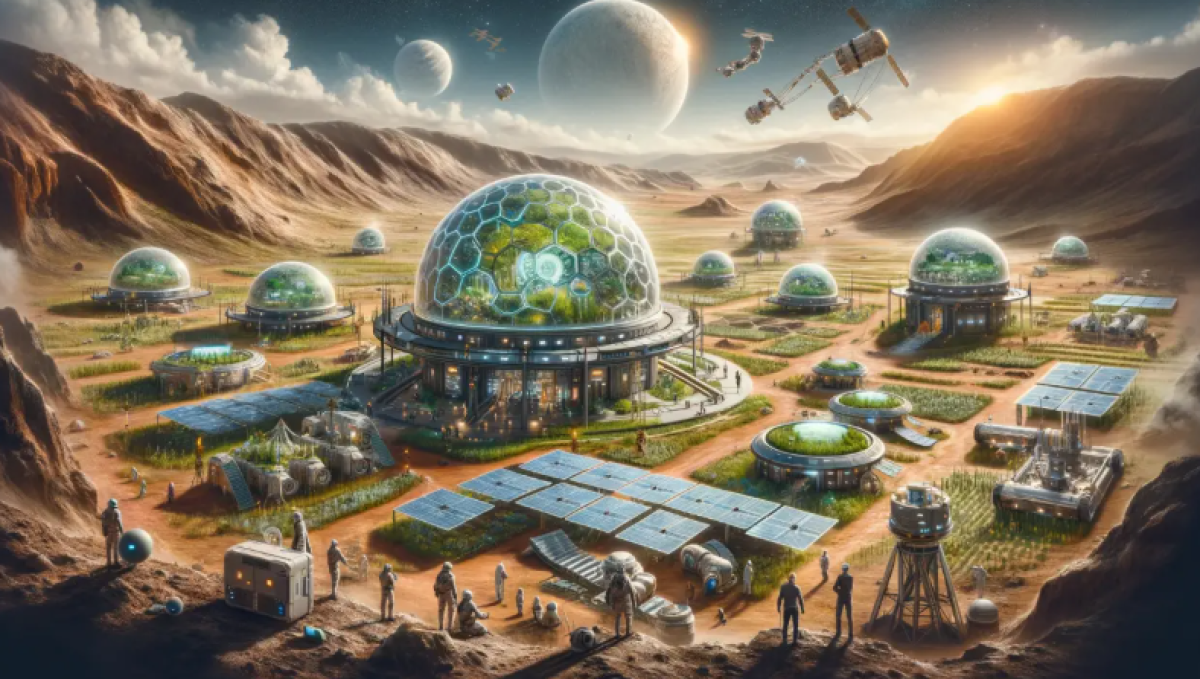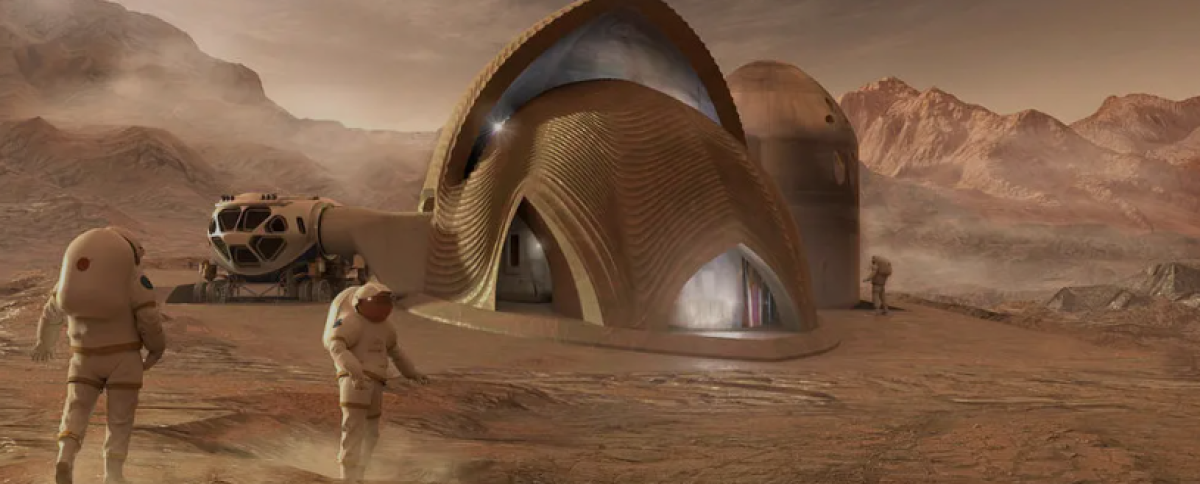Trump calls Epstein photo release a political distraction by Democrats
U.S. President Donald Trump has criticised the release of photographs linking former President Bill Clinton to the late convicted sex offender Jeffrey...
Elon Musk's dream of sending humans to Mars is becoming increasingly tangible, with SpaceX working on groundbreaking technology to make interplanetary travel a reality. But will the ambitious timeline hold up?
Why Mars? The Ideal Next Frontier
At an average distance of about 140 million miles, Mars is one of Earth’s closest and most habitable neighbours. Musk’s vision centres on the idea that, despite the challenges, Mars is a prime candidate for human colonisation. Why? Mars receives ample sunlight, similar to Earth, and its days are just a bit longer, around 24 hours and 37 minutes. It’s an environment that’s far from ideal, but one that can be transformed according to scientists.
Mars’ atmosphere, mostly composed of carbon dioxide (CO2), presents both a challenge and an opportunity: If we could compress the atmosphere, we might even be able to grow plants. The planet's gravity is about 38% of Earth's, meaning humans could bound around with ease and lift heavy objects, a fascinating prospect for those imagining life on Mars.
The Starship: The Gateway to Mars
Central to Musk's Mars mission is Starship, SpaceX’s next-generation spacecraft. This fully reusable rocket system, including the Starship spacecraft and its Super Heavy booster, is designed to carry both crew and cargo to Earth’s orbit, the Moon, and, of course, Mars.
Starship is currently the world’s most powerful launch vehicle ever developed. It’s capable of carrying up to 150 metric tonnes in a fully reusable configuration, and up to 250 metric tonnes in an expendable one. This makes it a crucial tool for humanity’s Mars ambitions.
The entry and landing on Mars, however, won’t be easy. Starship will enter Mars' atmosphere at speeds of 7.5 kilometres per second, which means decelerating aerodynamically is a major challenge. Musk has already acknowledged that the heatshield, designed to withstand multiple entries, will face tougher conditions when entering Mars’ atmosphere. Nonetheless, SpaceX continues to test heatshield materials in simulated Mars conditions to ensure Starship can make these landings safely.

The Mars Timeline: A Slippery Goal
The road to Mars is far from smooth though. Musk has a notoriously optimistic timeline, and although his predictions have often missed the mark, they reflect his ambition. Musk has suggested that SpaceX could send its first uncrewed mission to Mars by late 2026. The window of opportunity for a Mars mission opens once every two years when Earth and Mars align, so 2026 is a critical year for SpaceX.
Musk’s timeline for crewed missions to Mars is more flexible, with 2029 being a possible target for the first human landing. However, he admitted that 2031 might be a more realistic expectation. The first flights will likely carry Tesla's humanoid robots—Optimus—who will act as the simulated crew until humans can take the leap.
Bumps Along the Way
SpaceX’s journey has been riddled with setbacks. In the past, Musk’s ambitious deadlines for Mars missions have been pushed back multiple times. In 2016, Musk proposed sending humans to Mars by 2024; this was later revised to 2026. However, several recent test flights of the Starship rocket have faced failures, including one in which the rocket exploded minutes after liftoff in early 2023.
Despite these failures, Musk remains determined. After each failure, he and his team analyse the data and continue pushing forward. After one such explosion, Musk said, “Not easy making life multiplanetary,” showing his unwavering resolve. While these failed tests provide setbacks, Musk believes they ultimately help SpaceX get closer to achieving its ambitious goals.

Musk’s Motivations: An Existential Need
Why does Musk want to send humans to Mars? The answer lies in his concern for Earth’s future. Musk has long said that humanity needs to become a multi-planetary species to ensure its survival. Whether caused by natural disasters, climate change, or human-made catastrophes, Musk argues that it’s important to have a "backup" plan for humanity.
“If something terrible happens on Earth, either made by humans or natural, we want to have life insurance for life as a whole,” Musk said. Mars, according to him, is humanity’s best shot at achieving that insurance.
Musk’s vision is not just about saving humanity, though. He envisions a thriving self-sustaining colony on Mars, with one million people living on the planet by the 2040s. To support this vision, Musk’s SpaceX is developing the necessary technologies to make this happen, everything from building shelters to creating systems for generating energy and growing food.
What’s Next?
Musk’s ambitious mission to Mars is part of his grander plan to help humanity become multi-planetary. He’s also working with NASA on lunar missions, with the goal of landing astronauts on the Moon by 2027 as part of NASA’s Artemis Program. But Mars is the ultimate goal.
f SpaceX’s Starship can prove its reliability in upcoming tests, Musk’s dream of reaching Mars could very well come true. But the road is long, and the challenges immense. However, Musk remains confident.
“We’re going to make it so that anyone can travel to Mars if they would like,” he said.
Vince Zampella, co-creator of the Call of Duty franchise, has died after a Ferrari crash on Angeles Crest Highway north of Los Angeles.
Israeli Prime Minister Benjamin Netanyahu said Israel is monitoring recent Iranian military exercises and will raise the issue with U.S. President Donald Trump during his visit to Washington next week.
A major power outage swept across San Francisco on Saturday, leaving up to 130,000 customers without electricity, disrupting traffic and forcing some businesses to close temporarily, officials said.
Israel’s government has approved the creation of 19 new Jewish settlements in the occupied West Bank, a move that analysts say further undermines the prospects for a viable Palestinian state.
The European Union stands at a crossroads: to receive new members and accelerate the enlargement process in order to strengthen its role in the international arena, or to risk strategic stagnation by delaying expansion in favor of internal reform.
U.S. President Donald Trump has criticised the release of photographs linking former President Bill Clinton to the late convicted sex offender Jeffrey Epstein, calling the move a political distraction by Democrats.
A massive Russian strike on Ukraine killed at least three people, including a four-year-old, as air raids and power outages hit cities nationwide. President Zelenskyy condemned the attack, urging greater pressure on Moscow.
Negotiations conducted with the United States and European nations, aimed at ending the nearly four-year war with Russia, were "very close to a real result," Ukrainian President Volodymyr Zelenskyy said on Monday.
Start your day informed with AnewZ Morning Brief: here are the top news stories for the 23rd of December, covering the latest developments you need to know.
The U.S. State Department has authorised a potential Foreign Military Sale of Advanced Medium Range Air‑to‑Air Missiles (AMRAAM) to Denmark, aimed at bolstering the Scandinavian nation’s air defence capabilities, the Pentagon’s Defence Security Cooperation Agency said on Monday.
You can download the AnewZ application from Play Store and the App Store.

What is your opinion on this topic?
Leave the first comment